- Clone
- E11 (See other available formats)
- Regulatory Status
- RUO
- Workshop
- III 204
- Other Names
- C3b/C4b receptor, complement receptor type 1 (CR1)
- Isotype
- Mouse IgG1, κ
- Ave. Rating
- Submit a Review
- Product Citations
- 7 publications
| Cat # | Size | Price | Quantity Check Availability | Save | ||
|---|---|---|---|---|---|---|
| 333405 | 25 tests | 98€ | ||||
| 333406 | 100 tests | 210€ | ||||
CD35 is a type I single chain of glycoprotein, also known as C3b/C4b receptor, Complement Receptor type 1 or CR1. Four molecular weight allotypes (160kD, 190kD, 220kD, and 250kD) have been described. CD35 is expressed on granulocytes, monocytes, B cells, erythrocytes, and follicular dendritic cells, as well as subsets of NK and T cells. CD35 binds complement C3b, C4b, or iC3, and iC4, and plays important roles in both innate and adoptive immune response via mediating phagocytosis by granulocytes and monocytes. CD35 has also been reported to inhibit T-cell proliferation.
Product DetailsProduct Details
- Verified Reactivity
- Human
- Reported Reactivity
- African Green, Baboon, Cynomolgus, Rhesus
- Antibody Type
- Monoclonal
- Host Species
- Mouse
- Formulation
- Phosphate-buffered solution, pH 7.2, containing 0.09% sodium azide and BSA (origin USA)
- Preparation
- The antibody was purified by affinity chromatography, and conjugated with PE under optimal conditions.
- Concentration
- Lot-specific (to obtain lot-specific concentration and expiration, please enter the lot number in our Certificate of Analysis online tool.)
- Storage & Handling
- The antibody solution should be stored undiluted between 2°C and 8°C, and protected from prolonged exposure to light. Do not freeze.
- Application
-
FC - Quality tested
SB - Reported in the literature, not verified in house - Recommended Usage
-
Each lot of this antibody is quality control tested by immunofluorescent staining with flow cytometric analysis. For flow cytometric staining, the suggested use of this reagent is 5 µl per million cells in 100 µl staining volume or 5 µl per 100 µl of whole blood.
- Excitation Laser
-
Blue Laser (488 nm)
Green Laser (532 nm)/Yellow-Green Laser (561 nm)
- Application Notes
-
Additional reported applications (for the relevant formats) include: spatial biology (IBEX)4,5.
- Additional Product Notes
-
Iterative Bleaching Extended multi-pleXity (IBEX) is a fluorescent imaging technique capable of highly-multiplexed spatial analysis. The method relies on cyclical bleaching of panels of fluorescent antibodies in order to image and analyze many markers over multiple cycles of staining, imaging, and, bleaching. It is a community-developed open-access method developed by the Center for Advanced Tissue Imaging (CAT-I) in the National Institute of Allergy and Infectious Diseases (NIAID, NIH).
- Application References
- Product Citations
-
- RRID
-
AB_2085021 (BioLegend Cat. No. 333405)
AB_2292231 (BioLegend Cat. No. 333406)
Antigen Details
- Structure
- Type I glycoprotein with four allotypes, 160kD, 190kD, 220kD, 250kD
- Distribution
-
Granulocytes, monocytes, B cells, erythrocytes, follicular dendritic cells, subsets of NK and T cells
- Function
- Adhesion, mediate phagocytosis, inhibit T-cell proliferation
- Ligand/Receptor
- C3b, iC3, C4b, iC4
- Cell Type
- B cells, Dendritic cells, Erythrocytes, Granulocytes, Monocytes, NK cells, T cells
- Biology Area
- Cell Biology, Complement, Immunology, Neuroinflammation, Neuroscience
- Molecular Family
- CD Molecules
- Antigen References
-
1. Zola Heddy, et al. Eds. 2007. Leukocyte and Stromal Cell Molecules:The CD markers. WILEY-LISS
2. Klickstein LB, et al. 1988. J. Exp. Med. 168:1699 - Gene ID
- 1378 View all products for this Gene ID
- UniProt
- View information about CD35 on UniProt.org
Related Pages & Pathways
Pages
Related FAQs
- What type of PE do you use in your conjugates?
- We use R-PE in our conjugates.
- If an antibody clone has been previously successfully used in IBEX in one fluorescent format, will other antibody formats work as well?
-
It’s likely that other fluorophore conjugates to the same antibody clone will also be compatible with IBEX using the same sample fixation procedure. Ultimately a directly conjugated antibody’s utility in fluorescent imaging and IBEX may be specific to the sample and microscope being used in the experiment. Some antibody clone conjugates may perform better than others due to performance differences in non-specific binding, fluorophore brightness, and other biochemical properties unique to that conjugate.
- Will antibodies my lab is already using for fluorescent or chromogenic IHC work in IBEX?
-
Fundamentally, IBEX as a technique that works much in the same way as single antibody panels or single marker IF/IHC. If you’re already successfully using an antibody clone on a sample of interest, it is likely that clone will have utility in IBEX. It is expected some optimization and testing of different antibody fluorophore conjugates will be required to find a suitable format; however, legacy microscopy techniques like chromogenic IHC on fixed or frozen tissue is an excellent place to start looking for useful antibodies.
- Are other fluorophores compatible with IBEX?
-
Over 18 fluorescent formats have been screened for use in IBEX, however, it is likely that other fluorophores are able to be rapidly bleached in IBEX. If a fluorophore format is already suitable for your imaging platform it can be tested for compatibility in IBEX.
- The same antibody works in one tissue type but not another. What is happening?
-
Differences in tissue properties may impact both the ability of an antibody to bind its target specifically and impact the ability of a specific fluorophore conjugate to overcome the background fluorescent signal in a given tissue. Secondary stains, as well as testing multiple fluorescent conjugates of the same clone, may help to troubleshoot challenging targets or tissues. Using a reference control tissue may also give confidence in the specificity of your staining.
- How can I be sure the staining I’m seeing in my tissue is real?
-
In general, best practices for validating an antibody in traditional chromogenic or fluorescent IHC are applicable to IBEX. Please reference the Nature Methods review on antibody based multiplexed imaging for resources on validating antibodies for IBEX.
Other Formats
View All CD35 Reagents Request Custom Conjugation| Description | Clone | Applications |
|---|---|---|
| Purified anti-human CD35 | E11 | FC,IP,IHC |
| FITC anti-human CD35 | E11 | FC |
| PE anti-human CD35 | E11 | FC,SB |
| TotalSeq™-A0167 anti-human CD35 | E11 | PG |
| TotalSeq™-C0167 anti-human CD35 | E11 | PG |
| TotalSeq™-B0167 anti-human CD35 | E11 | PG |
| Biotin anti-human CD35 | E11 | FC |
| Brilliant Violet 421™ anti-human CD35 | E11 | FC |
| TotalSeq™-D0167 anti-human CD35 | E11 | PG |
| APC anti-human CD35 | E11 | FC |
Customers Also Purchased
Compare Data Across All Formats
This data display is provided for general comparisons between formats.
Your actual data may vary due to variations in samples, target cells, instruments and their settings, staining conditions, and other factors.
If you need assistance with selecting the best format contact our expert technical support team.
-
Purified anti-human CD35
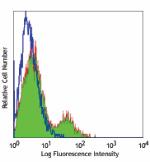
Human peripheral blood lymphocytes stained purified E11, fol... -
FITC anti-human CD35

Human peripheral blood lymphocytes stained with E11 FITC -
PE anti-human CD35
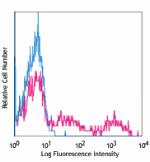
Human peripheral blood lymphocytes stained with E11 PE 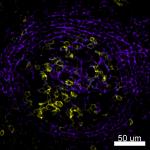
Confocal image of human lymph node sample acquired using the... 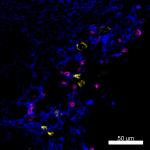
Confocal image of human lymph node sample acquired using the... -
TotalSeq™-A0167 anti-human CD35
-
TotalSeq™-C0167 anti-human CD35
-
TotalSeq™-B0167 anti-human CD35
-
Biotin anti-human CD35

Human peripheral blood lymphocytes were stained with anti-hu... -
Brilliant Violet 421™ anti-human CD35

Human peripheral blood lymphocytes were stained with anti-hu... -
TotalSeq™-D0167 anti-human CD35
-
APC anti-human CD35

Human peripheral blood lymphocytes were stained with anti-hu...

 Login / Register
Login / Register 














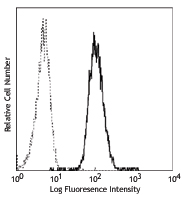

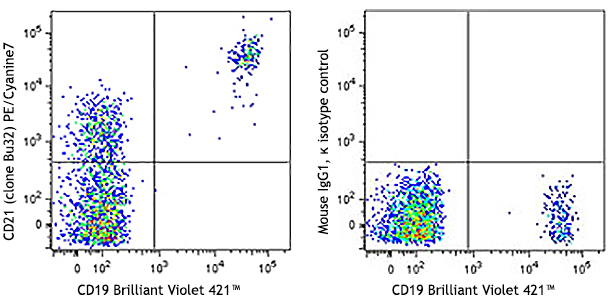








Follow Us